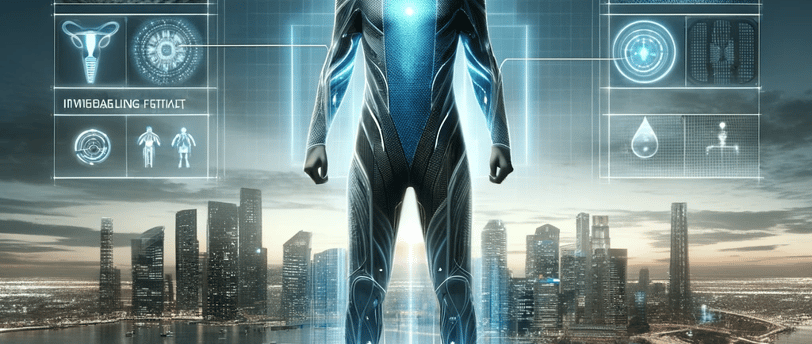Smart Textiles: Clothing that Senses, Reacts, and Adapts
12/19/20233 min read


Smart textiles, also known as e-textiles or electronic textiles, are revolutionizing the fashion industry by integrating technology into our everyday clothing. These innovative wearable technologies are designed to sense, react, and adapt to the wearer's needs, providing a whole new level of functionality and convenience. From fitness trackers to temperature-regulating fabrics, smart textiles are transforming the way we dress and interact with our clothing.
The Rise of Smart Textiles
In recent years, there has been a significant increase in the development and adoption of smart textiles. Advances in material science, nanotechnology, and electronics have paved the way for the integration of sensors, actuators, and other electronic components into fabrics. This has opened up a world of possibilities for designers and engineers to create clothing that not only looks stylish but also offers enhanced functionality.
Applications of Smart Textiles
Smart textiles have found applications in various industries, including healthcare, sports, fashion, and even military. Let's explore some of the most exciting use cases:
1. Fitness and Well-being
Smart textiles have become a game-changer in the fitness industry. With built-in sensors, these fabrics can monitor heart rate, body temperature, and even track movements during workouts. This data can be wirelessly transmitted to a smartphone or a fitness tracker, allowing users to keep track of their progress and make informed decisions about their health and fitness goals.
Additionally, smart textiles can help prevent injuries by providing real-time feedback on posture and technique. For example, a shirt with embedded sensors can alert the wearer if they are slouching or not lifting weights correctly, helping them maintain proper form and reduce the risk of injury.
2. Fashion and Design
Smart textiles are not just limited to the realm of fitness. They are also making waves in the fashion industry. Designers are incorporating LED lights, flexible displays, and even shape-changing materials into their creations, blurring the line between fashion and technology.
Imagine a dress that changes color based on your mood or a jacket that displays weather updates. These futuristic garments not only make a fashion statement but also showcase the endless possibilities of smart textiles in the world of design.
3. Healthcare and Medical Applications
Smart textiles have immense potential in the healthcare sector. They can be used to monitor vital signs, detect irregularities, and even deliver medication. For example, a smart bandage embedded with sensors can track the healing process of a wound and alert healthcare professionals if any complications arise.
Furthermore, smart textiles can assist individuals with disabilities or chronic conditions. For instance, garments with haptic feedback can help visually impaired individuals navigate their surroundings by providing tactile cues.
4. Safety and Protection
Smart textiles are also finding applications in safety and protection. Firefighters, for instance, can benefit from heat-resistant fabrics that can detect high temperatures and warn them of potential hazards. Similarly, the military can use smart textiles to monitor soldiers' vital signs and provide real-time data on their health and well-being.
Additionally, smart textiles can be incorporated into personal protective equipment (PPE) to enhance safety in industrial settings. For example, a construction worker's vest with built-in sensors can detect hazardous gases and alert the wearer before they are exposed to any danger.
The Future of Smart Textiles
The future of smart textiles is incredibly promising. As technology continues to advance, we can expect even more innovative applications and functionalities. Some of the emerging trends in this field include:
1. Energy Harvesting
Researchers are exploring ways to harness the energy generated by body movements to power wearable devices. Imagine charging your smartwatch simply by going for a run or generating electricity to power your smartphone through the movement of your clothing. Energy harvesting textiles could revolutionize the way we think about powering our electronic devices.
2. Environmental Monitoring
Smart textiles can play a vital role in monitoring environmental conditions such as air quality, temperature, and humidity. These fabrics can provide real-time data that can help individuals make informed decisions about their surroundings and take necessary precautions.
3. Emotional and Mental Health
There is growing interest in developing smart textiles that can monitor emotional and mental states. These fabrics could potentially detect stress levels, monitor sleep patterns, and provide feedback to help individuals manage their well-being.
Conclusion
Smart textiles are revolutionizing the fashion industry and beyond, offering a wide range of applications that enhance our lives in numerous ways. From fitness tracking to healthcare monitoring, these innovative garments are transforming the way we interact with our clothing. As technology continues to advance, we can look forward to even more exciting developments in the field of smart textiles, making our clothes not only stylish but also smarter than ever before.
